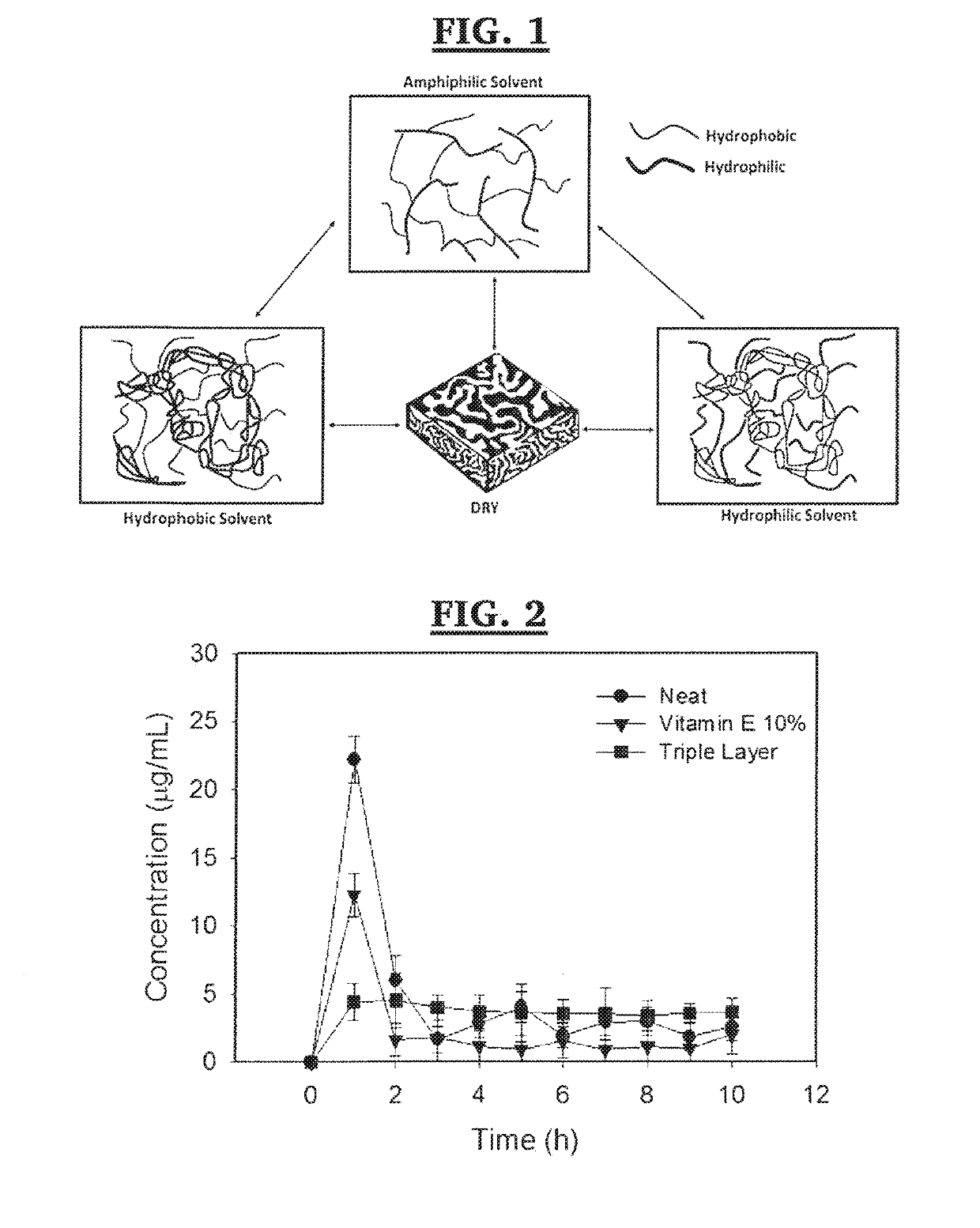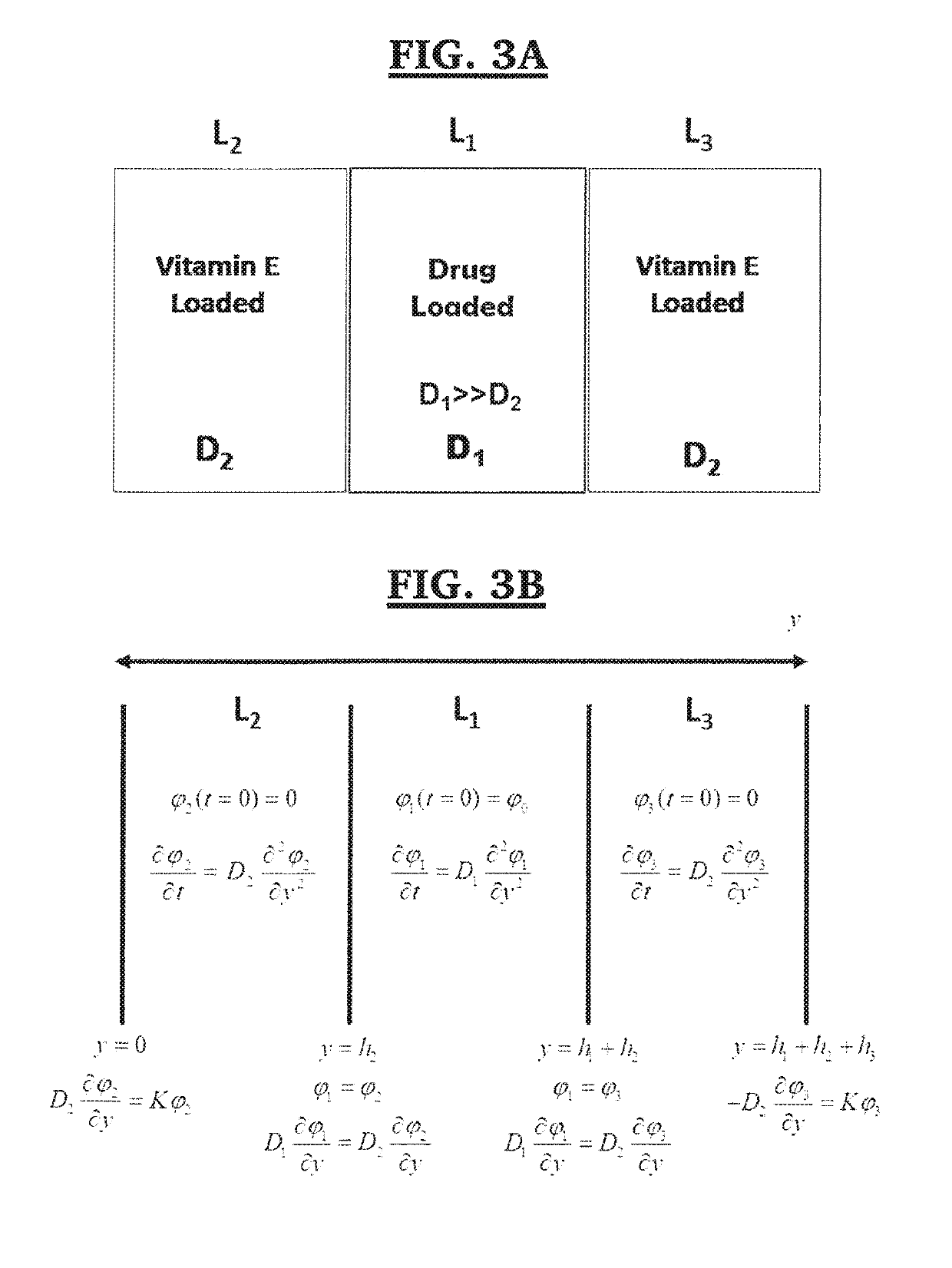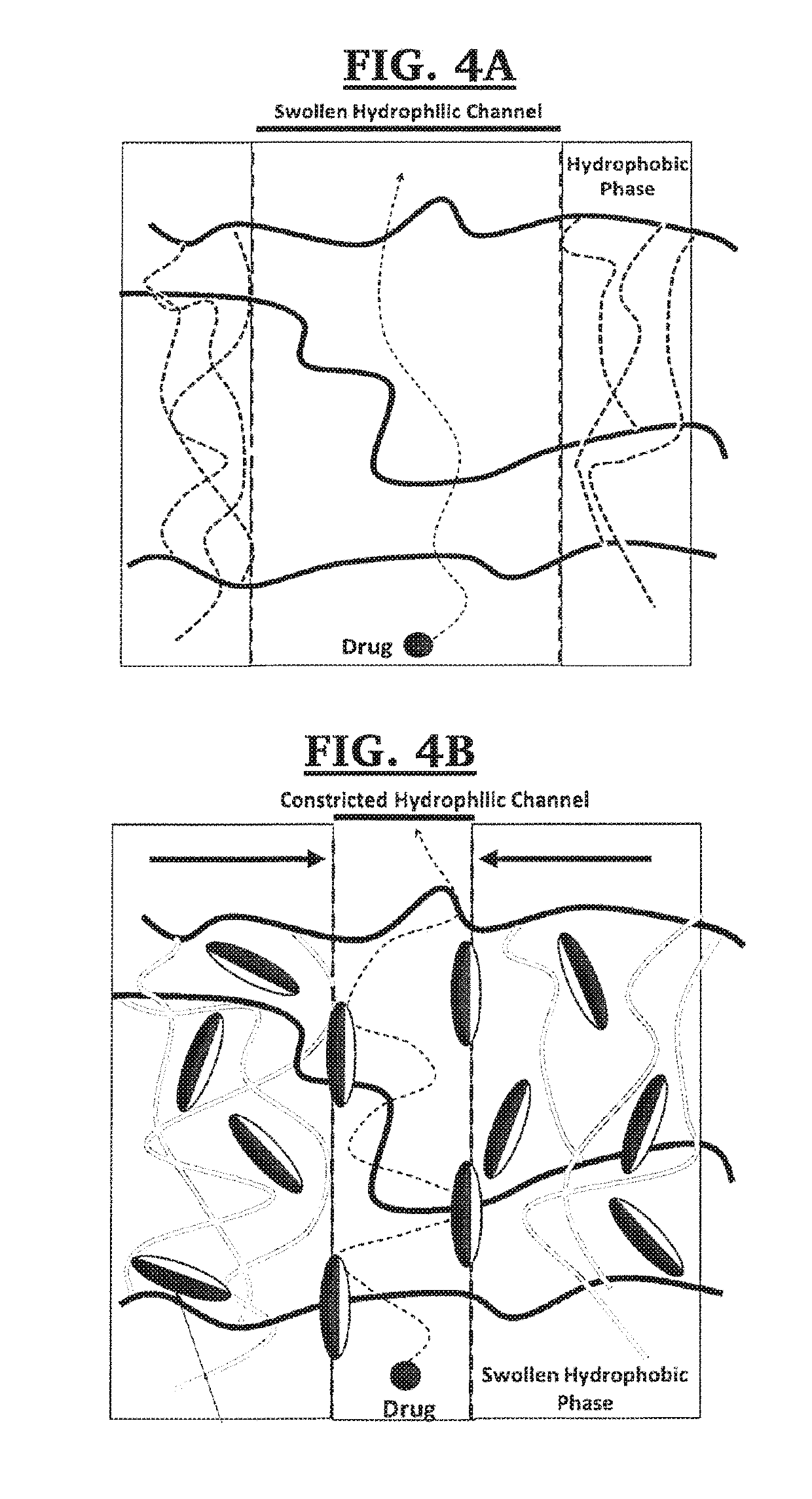Apparatus and method for zero order drug delivery from multilayer amphiphilic co-networks
a drug delivery and multi-layer technology, applied in the field of multi-layer zero-order drug delivery systems, can solve the problems of significant disadvantages of eye drops for treating ocular conditions, ineffective method, and considerable side effects, and achieves high drug diffusivity, slow drug diffusion, and high drug loading.
- Summary
- Abstract
- Description
- Claims
- Application Information
AI Technical Summary
Benefits of technology
Problems solved by technology
Method used
Image
Examples
example 1
Materials
[0116]The synthesis and characterization of Bimodal Amphiphilic Conetworks was reported before. See e.g., G. Guzman, T. Nugay, l. Nugay, N. Nugay, J. Kennedy, M. Cakmak, Macromolecules 2015, 48, 6251 and International Published Patent Application No. WO 2014 / 197699, the disclosures of which are incorporated herein by reference in their entirety. Polyhydrosiloxane-PDMS copolymer (PHMS-co-PDMS) containing 30% PHMS, and Karstedt's catalyst (3% Pt in xylene, low color) were purchased from Gelest and used without further purification. Tetrahydrofuran (THF) and a-tocopherol were obtained from Sigma Aldrich. Moxifloxacin Hydrochloride was obtained in its commercial eyedrop form, Vigamox™.
[0117]Grafts of 1, 2, and 5% HMW-PDMS (0.9 g) were mixed with crosslinker in three mole ratios (allyl chain end / hydrosiloxane=1:5, 1:10 and 1:25), and Karstedt's catalyst (25 uL) in THF (8 mL). The bAPGs were mixed with PHMS-co-PDMS crosslinker by strong stirring in THF for 10 mi...
example 2
Calculation of Molecular Weight between Crosslinks (Mc) Based on Experimental Data
[0120]The molecular weight between crosslinks (Mc) for bimodal co-networks of crosslinked poly(N,N-dimethylacrylamide) (PDMAAm) and polydimethylsiloxane (PDMS), as described in Example 1 above, was calculated based on experimental data as follows.
[0121]In a first step, the number of PDMAAm chains was calculated from the number of moles of DMAAm used to form the β-APCN. To do this, the number average molecular weight (Mn) of the PDMAAm was measured by gel permeation chromatography (GPC) and recorded and the initial weight of N,N-dimethylacrylamide (DMAAm) (3.57 g) was likewise measured and recorded. The initial weight of DMAAm then divided by the measured Mn to provide the number of moles of PDMAAm, which was reasonably assumed to be the number of PDMAAm chains in moles.
[0122]Alternatively, the number average molecular weight of the PDMAAm chains could have been calculated from the initial weight of N,N...
example 3
Synthesis of Poly(N,N-dimethylacrylamide) / Polydimethylsiloxane Conetworks
a) Synthesis of 2-propionic acid 3-(1,1,3,3-tetramethyldisiloxanyl) propyl ester (SiHMA)
[0127]The synthesis strategy for SiHMA is given by the following scheme:
[0128]Thus, tetramethyldisiloxane (134 g, 1 mol) and allyl methacrylate (126 g, 1 mol) were placed in a round bottom flask. The reaction was started by the addition of Karstedt's catalyst (0.5 mL) and the mixture was strirred for 3 h. Then triphenylphosphine (10 mL) was added and the charge was vacuum distilled at 50° C. The product (SiHMA) is a colorless liquid with a boiling point of 62° C. Proton NMR spectroscopy confirmed tyhe expected structure.
[0129]The spectrum shows a multiplet at 4.67 ppm, which indicates the presence of the SiH group, and the characteristic resonances at 6.2 and 5.6 ppm (for the olefinic protons) and at 1.9 ppm (for the methyl protons) are associated with the methacrylate (MA) group.
b) Synthesis of the Asymmetric-Telechelic Mac...
PUM
| Property | Measurement | Unit |
|---|---|---|
| hydrophilic pore size | aaaaa | aaaaa |
| wavelengths | aaaaa | aaaaa |
| molecular weight | aaaaa | aaaaa |
Abstract
Description
Claims
Application Information
 Login to View More
Login to View More - R&D
- Intellectual Property
- Life Sciences
- Materials
- Tech Scout
- Unparalleled Data Quality
- Higher Quality Content
- 60% Fewer Hallucinations
Browse by: Latest US Patents, China's latest patents, Technical Efficacy Thesaurus, Application Domain, Technology Topic, Popular Technical Reports.
© 2025 PatSnap. All rights reserved.Legal|Privacy policy|Modern Slavery Act Transparency Statement|Sitemap|About US| Contact US: help@patsnap.com



